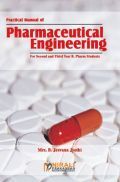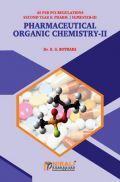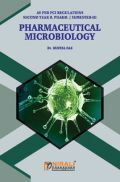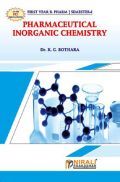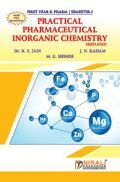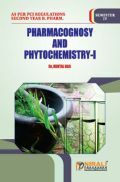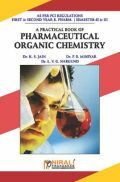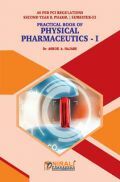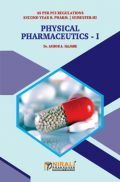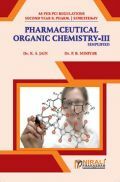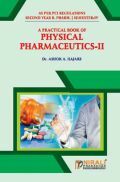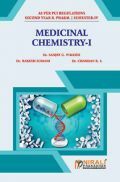This book having title "A Practical Book of Pharmaceutical Engineering" (As Per PCI Regulations).
The idea of the book initiated by students as it is difficult to conduct the experiments without practical manual. So we thought to bring a collective database for experiment.
This book is designed to impart a fundamental knowledge on the art and science of various unit operations used in pharmaceutical industry.
This book mainly aims in guiding the professor and students regarding the fundamental principles of Pharmaceutical Engineering. This book also helps the students in overcoming the obstacles faced by them in practical aspects of Pharmaceutical Engineering.
This book Useful for B.Pharma Students.
1. Determination of Radiation Constant of Iron
2. Determination of Radiation Constant of Brass
3. Determination of Radiation Constant of Glass (Unpainted and Painted)
4. To Calculate the Efficiency of Steam Distillation
5. To Determine the Overall Heat Transfer Coefficient by Heat Exchanger
6. Construction of Drying Curves (for Calcium Carbonate and Starch)
7. Determination of Moisture Content and Loss on Drying
8. Determination of Humidity of Air by Using Wet and Dry Bulb Temperatures or Psychrometer
9. Determination of Dew Point Temperature by Dew Point Method
10. Description of Construction, working and application of Pharmaceutical Machinery Such as Rotary Tablet Machine, Fluidized Bed Coater, Fluid Energy Mill and Humidifier
11. To Evaluate Size Distribution of Tablet Granulations (Size Analysis) by Sieving Method and Construct Size Frequency Curves Including Arithmetic and Logarithmic Probability Plots
12. To Verify the Laws of Size Reduction by Using Ball Mill and Calculate Kicks, Rittinger’s, Bond’s Coefficients, Power Requirement and Critical Speed of Ball Mill
13. Demonstration of Colloid Mill, Planetary Mixer, Fluidized Bed Dryer, Freeze Dryer and Such Other Major Equipment
14. To Study the Effect of Surface Area on the rate of Filtration
15. To Study the Effect of Concentration of Slurry on the Rate of Filtration
16. To Study the Effect of Viscosity (Thickness) on the Rate of Filtration
17. To Study the Effect of Surface Area on the Rate of Evaporation
18. To Study the Effect of Concentration on the Rate of Evaporation
19. To Study the Effect of Viscosity on the Rate of Evaporation
20. To Study the Effect of Time on the Rate of Crystallization
21. To Calculate the Uniformity Index for Given Sample by Using Double Cone Blender
Bibliography







